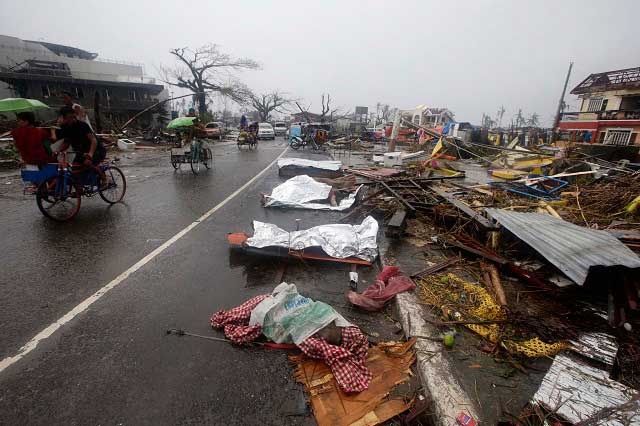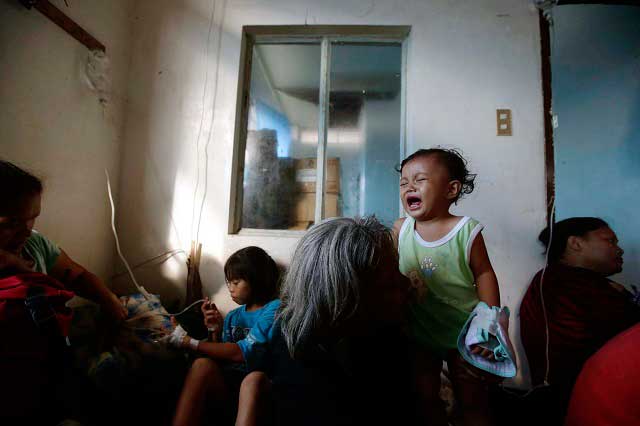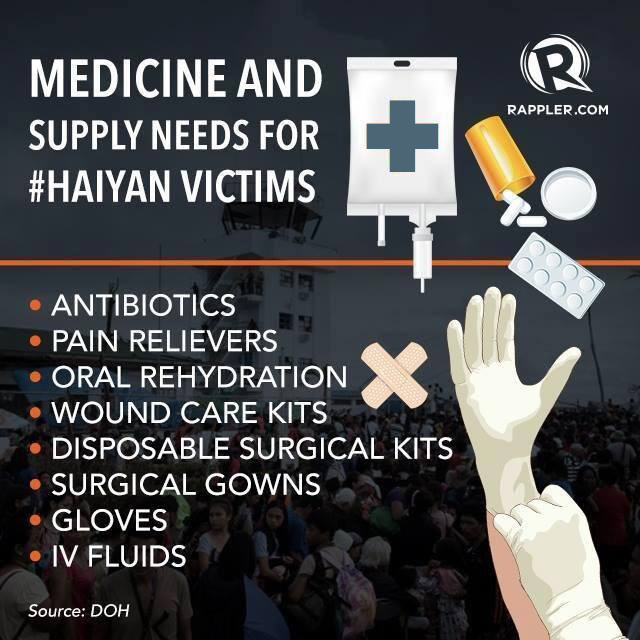SUMMARY
This is AI generated summarization, which may have errors. For context, always refer to the full article.

MANILA, Philippines – Survivors want the cadavers buried. To speed up identification, they have even placed name tags on the bodies they know. They fear that after surviving the disaster, they will die instead from diseases brought about by decomposing bodies around them. (READ: The stench of death in Tacloban)
The Department of Health, however, reiterated that cadavers pose no public health concern. They smell, yes, but smell does not kill.
“It will not kill you if it’s mabaho (it smells),” Health Undersecretary Ted Herbosa told Rappler on Wednesday, November 13.
Typhoon Yolanda (international codename: Haiyan), which ravaged parts of the Visayas on Friday left along its path thousands of bodies killed by strong winds, flood waters, falling debris, or trauma.
Herbosa said they requested assistance for international forensic experts a day after the super typhoon hit the country. These experts were tapped to identify bodies by examining dental imprints and DNA samples.
But until identified, burial must wait. “Because there is no closure. We have to assist so [survivors] can find their relatives,” Herbosa said in a mix of English and Filipino. (READ: How to handle corpses during disasters)
Clearing of the bodies already started today, he said, with temporary burial sites already identified in areas hit by the typhoon.
In Tacloban City, however, gunfire forced the cancellation of a mass burial on Wednesday. Gunshots halted a convoy travelling toward a communal grave.
“We had finished digging the mass burial site. We had the truck loaded with bodies…but…there was some shooting,” Tacloban Mayor Alfred Romualdez told Agence France-Presse. “They could not proceed.”

Risks for outbreaks
As of Wednesday, at least 200 DOH personnel were deployed to Tacloban City, the base of health operations in Eastern Visayas. (READ: Mental health, infections main concerns in Tacloban City)
In the city, the Eastern Visayas Medical Center is the only hospital that functions, resulting in overcrowding of patients. Still, the resident doctors and nurses kept working non-stop since Friday despite power outage and shortage in food and water.
“’Yung mga pulis wala, pero ‘yung mga doctor at nurse tuloy-tuloy (The police is nowhere to be found, but doctors and nurses continue working),” Herbosa said. Yesterday, a team from the health department came to relieve the medical staff and give them time to tend to themselves and their families.
No outbreaks have been reported yet in areas affected by the typhoon, the Department of Health (DOH) said, but risks are high for the following outbreaks:
- diarrhea
- respiratory illnesses
- leptospirosis
- influenza
The United Nations for the Coordination of Humanitarian Affairs, meanwhile, said in a situation report released on Tuesday that, aside from lack of psychosocial support, there is also a high risk for the following:
- acute respiratory
- infections
- diarrhea
- leptospirosis
- measles
- cholera
- typhoid

Equipment and medicine needed
As for international aid, Herbosa said all of them are channeled through the World Health Organization’s (WHO) health cluster for humanitarian aid, and brought to Cebu where they are processed by WHO. “We’re luckily able to convince some [aid] to deploy to other areas, [not just Tacloban].”
But some international teams request up to 4,000 square meters of cleared space for their operations. “E yung kalye nga di natin ma-clear e (We can’t even clear streets),” Herbosa lamented.
They appreciate and accept the help, he said, but at this point they need equipment and supplies more than manpower. “We don’t have a problem with personnel, but what we need is equipment and medicines.”
To date, DOH said medical teams and logistic supplies from Belgium, Hungary, Malaysia, and Japan have arrived in Eastern Visayas, with more on the way. (READ: Yolanda (Typhoon Haiyan): Aid, donations from int’l community)
“These teams are self-sufficient and will pose no burden to host communities,” the department added. As for people who want to volunteer, Herbosa said they must be “real cowboys [who] can live in tents or lie down anywhere.” – with a report from Agence France-Presse/Rappler.com
IV fluids vector via Shutterstock
Adhesive bandage vector via Shutterstock
Sterile gloves vector via Shutterstock
Add a comment
How does this make you feel?
There are no comments yet. Add your comment to start the conversation.